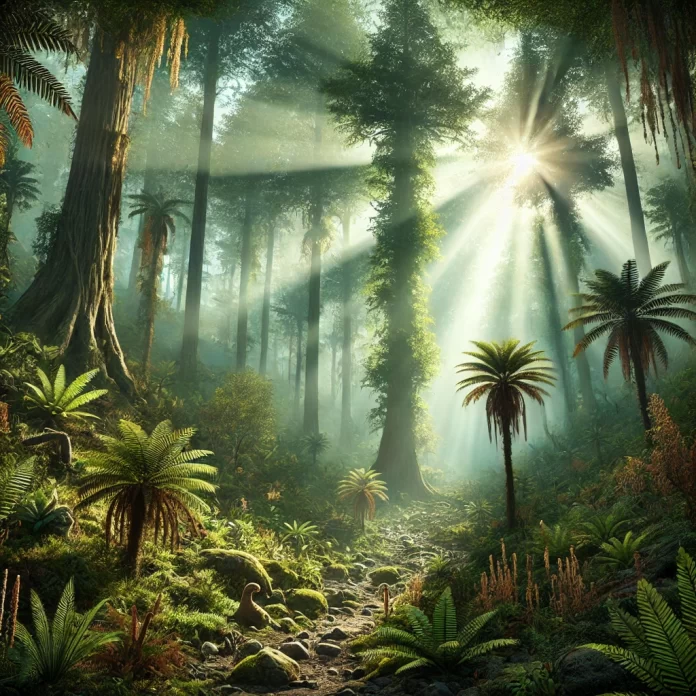The Gilboa forest, nestled in the hills of upstate New York, holds an extraordinary claim to fame: it is home to the remnants of the oldest known forest on Earth. Dating back approximately 385 million years to the Devonian Period, this ancient ecosystem has revolutionized our understanding of early plant life and its impact on the planet.
A Snapshot of the Devonian Period
The Devonian Period, often referred to as the “Age of Fishes,” was a transformative time in Earth’s history. It marked a pivotal moment when life on land began to diversify. The Gilboa forest, with its early trees and plants, played a crucial role in this evolutionary leap. These pioneering plants laid the groundwork for the lush, diverse forests we know today.
The Discovery of the Gilboa Forest
The first clues to the existence of the Gilboa forest surfaced in the 1920s, when workers uncovered fossilized stumps during the construction of a dam near Gilboa, New York. These stumps, belonging to an extinct genus of tree called Eospermatopteris, were initially puzzling to scientists. For decades, they were considered little more than enigmatic relics of a bygone era.
It wasn’t until later discoveries in the 2000s that paleobotanists uncovered more complete fossils, including upright trunks and foliage, which helped piece together a more comprehensive picture of the forest. These findings confirmed that the Gilboa forest was not a simple patch of vegetation but a complex, multi-layered ecosystem.
The Trees of Gilboa
The dominant tree in the Gilboa forest was Eospermatopteris, a primitive plant resembling a modern-day tree fern or palm. These trees lacked true leaves and instead featured a crown of fronds at the top of their trunks. They reproduced using spores, much like ferns and mosses.
In addition to Eospermatopteris, the forest included early relatives of modern horsetails and club mosses. Some of these plants could grow up to 10 meters tall, making them giants in a world where land plants were still a relatively new phenomenon. The diversity of the flora hints at a dynamic environment where plants were beginning to experiment with different forms and structures.
Ecological Impact
The Gilboa forest played a critical role in shaping Earth’s environment. By drawing carbon dioxide from the atmosphere and releasing oxygen, these early forests contributed to the gradual transformation of the planet’s climate. The extensive root systems of these plants also helped to stabilize soil and reduce erosion, paving the way for more complex terrestrial ecosystems.
Modern-Day Significance
Today, the Gilboa fossil site is a treasure trove for paleobotanists and geologists. The fossils provide invaluable insights into the early evolution of forests and their role in Earth’s history. Studying the Gilboa forest helps scientists understand how plants adapted to life on land, how they influenced the climate, and how they interacted with other organisms in their environment.
Visitors to the area can explore exhibits at the Gilboa Museum and Juried History Center, which houses many of the fossils found in the region. The museum offers a fascinating glimpse into a world that existed long before the rise of dinosaurs.
What the Site is Like Today
The modern-day Gilboa area is a quiet, picturesque region that offers more than just a window into the past. Surrounded by the scenic Catskill Mountains, it is an excellent destination for nature enthusiasts and history buffs alike. The nearby Schoharie Reservoir, created by the dam that initially revealed the fossilized forest, provides opportunities for fishing, boating, and hiking.
The Gilboa Museum and Juried History Center is a highlight for visitors, featuring interactive displays, detailed reconstructions of the ancient forest, and fossil specimens that transport guests back to the Devonian Period. The museum also organizes educational programs and guided tours, making it a popular spot for school trips and family outings. Informative plaques and exhibits scattered throughout the area ensure that visitors leave with a deeper appreciation of the site’s significance.
While much of the original fossilized forest remains hidden beneath the surface, researchers continue to make new discoveries, ensuring that the Gilboa site remains a focal point for scientific exploration and public interest.
A Living Legacy
The Gilboa forest stands as a testament to the resilience and adaptability of life. Its ancient trees, though long extinct, continue to inspire awe and curiosity. By uncovering the secrets of this prehistoric forest, scientists not only illuminate the past but also gain insights that may guide us in preserving the forests of today and tomorrow.
The story of the Gilboa forest is a reminder of how much we owe to the pioneering plants that transformed the Earth into a habitable world. Their legacy lives on in every leaf, branch, and root that surrounds us.




